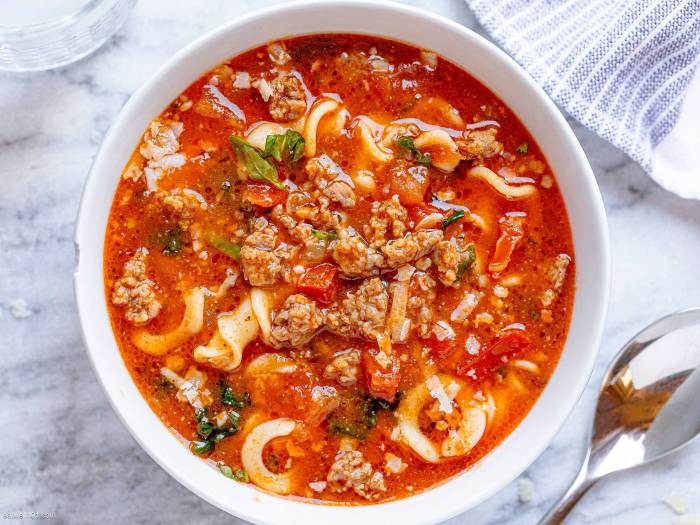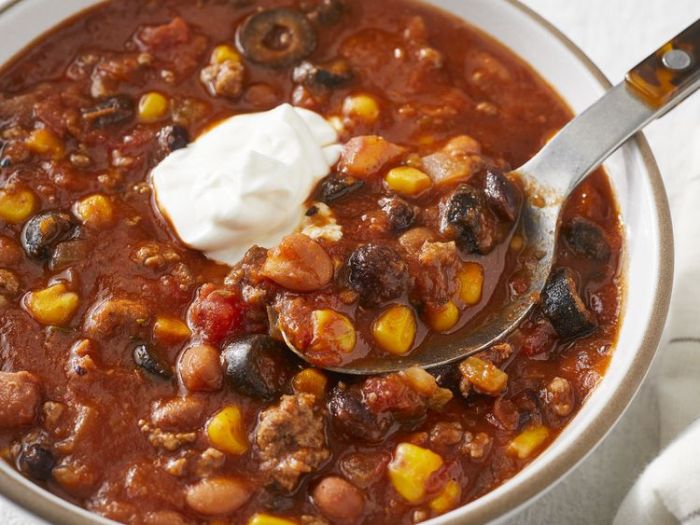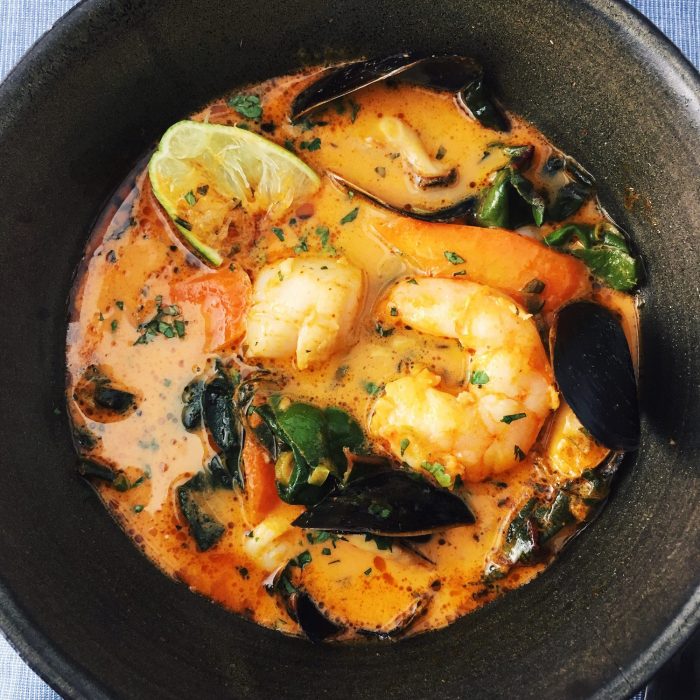Recipe Variations
Old fashioned sausage soup recipe – Old-fashioned sausage soup offers incredible versatility. The choice of sausage, broth, and additional ingredients significantly impacts the final flavor profile. Below, we explore three distinct variations, highlighting the nuances of each.
Sausage Type Variations
Three popular sausage choices dramatically alter the soup’s character. Italian sausage provides a savory, slightly spicy base; kielbasa contributes a smoky, robust flavor; while bratwurst lends a more subtly sweet and herbaceous note.
- Italian Sausage: This option creates a soup with a bold, slightly spicy kick. The fennel notes in many Italian sausages complement the other ingredients beautifully.
- Kielbasa: The smoky flavor of kielbasa adds depth and complexity. This choice results in a richer, more savory soup.
- Bratwurst: Bratwurst offers a milder, sweeter flavor profile, creating a more approachable and less intensely savory soup.
Broth Choice Impact
The broth forms the foundation of the soup, influencing its overall taste and texture. Chicken broth provides a classic, comforting base; beef broth adds a richer, more robust flavor; while vegetable broth offers a lighter, vegetarian-friendly alternative.
- Chicken Broth: A classic choice that complements most sausage types and lends a familiar, comforting flavor.
- Beef Broth: Enhances the savory notes of the sausage, resulting in a heartier, more intense soup.
- Vegetable Broth: Creates a lighter, vegetarian option, allowing the other flavors to shine. Consider adding a touch of soy sauce or Worcestershire sauce for depth if needed.
Unique Ingredient Additions
Elevating this classic soup involves incorporating unique ingredients that add layers of flavor and texture. These additions can range from different vegetables to aromatic herbs and spices.
- Carrots and Celery: Classic additions that provide sweetness and heartiness.
- Fresh Thyme and Rosemary: These herbs enhance the savory notes of the sausage and broth.
- A splash of White Wine: Adds brightness and complexity to the broth.
Nutritional Comparison of Variations
The nutritional content varies slightly depending on the ingredients used. This table provides an approximate comparison, assuming similar portion sizes.
| Variation | Calories (approx.) | Protein (approx.) | Fat (approx.) |
|---|---|---|---|
| Italian Sausage | 350-400 | 25-30g | 20-25g |
| Kielbasa | 380-430 | 28-33g | 22-27g |
| Bratwurst | 320-370 | 22-27g | 18-23g |
Cooking Methods & Techniques

Source: eatwell101.com
Old-fashioned sausage soup can be prepared using various methods, each resulting in slightly different textures and flavors. The slow cooker offers convenience, while the stovetop method allows for more immediate control over the cooking process.
Slow Cooker Method
The slow cooker method is ideal for a hands-off approach. Simply brown the sausage, sauté vegetables, and combine all ingredients in the slow cooker. Cook on low for 6-8 hours or high for 3-4 hours, allowing the flavors to meld beautifully.
- Brown the sausage in a large skillet over medium heat until browned and slightly crispy.
- Sauté diced onions, carrots, and celery in the same skillet until softened.
- Combine the browned sausage, vegetables, broth, and seasonings in a slow cooker.
- Cook on low for 6-8 hours or high for 3-4 hours.
- Stir in any additional ingredients during the last 30 minutes of cooking.
Stovetop vs. Slow Cooker
The stovetop method results in a slightly thicker soup with more intensely browned sausage flavors. The slow cooker method yields a more tender sausage and a smoother, richer broth.
Proper Sausage Browning
Browning the sausage is crucial for developing rich flavor. Cook the sausage over medium heat, ensuring it’s browned on all sides before adding other ingredients. Avoid overcrowding the pan, which can lead to steaming instead of browning.
Troubleshooting Tips, Old fashioned sausage soup recipe
- Soup too thick: Add more broth or water, a tablespoon at a time, until desired consistency is reached.
- Soup too thin: Simmer the soup uncovered for a longer period to reduce the liquid. Alternatively, whisk in a cornstarch slurry (1 tablespoon cornstarch mixed with 2 tablespoons cold water) to thicken.
- Sausage not browned enough: Ensure the sausage is cooked in batches to prevent steaming. Cook over medium heat, turning frequently.
Historical Context & Regional Differences
The origins of old-fashioned sausage soup are rooted in peasant cooking traditions across various cultures. Regional variations abound, reflecting local ingredients and culinary practices.
Historical Origins
The concept of sausage soup, utilizing readily available ingredients like sausages and seasonal vegetables, likely emerged centuries ago as a practical and hearty meal. Precise origins are difficult to pinpoint, but similar recipes exist in many European cuisines.
Regional Variations
Regional differences manifest in the types of sausage used, the vegetables incorporated, and the seasonings employed. For example, a German version might feature smoked sausage and potatoes, while an Italian version could incorporate fennel and sun-dried tomatoes.
Regional Recipe Comparison
| Region | Sausage Type | Key Vegetables | Typical Seasonings |
|---|---|---|---|
| German | Smoked sausage (e.g., knockwurst) | Potatoes, carrots, cabbage | Caraway seeds, marjoram |
| Italian | Italian sausage (sweet or spicy) | Onions, garlic, tomatoes, zucchini | Oregano, basil, red pepper flakes |
Anecdotes and Stories
Many families have their own treasured sausage soup recipes, passed down through generations. These recipes often reflect specific regional traditions and family preferences, making each version unique and meaningful.
Serving Suggestions & Presentation
Serving old-fashioned sausage soup creatively elevates the dining experience. Beyond the classic bowl, consider these presentation options to enhance the appeal of this comforting dish.
Creative Serving Suggestions
- Bread Bowl: Serve the soup in a crusty bread bowl for a rustic and flavorful presentation. The bread soaks up the delicious broth.
- Garnish Extravaganza: A sprinkle of fresh parsley, a dollop of sour cream or crème fraîche, and a drizzle of olive oil elevate the visual appeal.
- Miniature Cups: Serve individual portions in small, elegant cups for a sophisticated touch, perfect for parties or gatherings.
Visually Appealing Presentation
A visually appealing presentation starts with a clean, simple bowl. Consider using a rustic bowl to complement the home-style nature of the soup. Garnishes such as fresh herbs (parsley, thyme), a swirl of crème fraîche, and a sprinkle of grated Parmesan cheese add visual interest and enhance the flavors. Natural light and a neutral background create a clean, inviting photograph.
Complementary Side Dishes
- Crust Bread: Provides a perfect vehicle for soaking up the flavorful broth.
- Simple Salad: A light green salad with a vinaigrette dressing balances the richness of the soup.
- Garlic Bread: Adds a garlicky, buttery counterpoint to the savory soup.
Visually Appealing Image
To create a visually appealing image, use soft, natural light to avoid harsh shadows. A simple, neutral background (e.g., a wooden table or a light-colored tablecloth) allows the soup to be the focal point. Compose the shot from a slightly elevated angle to showcase the texture and garnishes effectively.
Ingredient Sourcing & Substitutions: Old Fashioned Sausage Soup Recipe
The quality of ingredients significantly impacts the overall taste of old-fashioned sausage soup. Sourcing high-quality ingredients and understanding potential substitutions ensures a delicious and satisfying outcome.
Importance of High-Quality Ingredients
Using high-quality ingredients, such as fresh vegetables and flavorful sausages, enhances the depth and complexity of the soup’s flavor profile. Fresh ingredients offer superior taste and nutritional value compared to pre-packaged options.
Ingredient Substitutions

Source: tasteofhome.com
- Sausage: Substitute any sausage type according to preference (e.g., andouille, chorizo).
- Vegetables: Feel free to experiment with other vegetables like potatoes, green beans, or mushrooms.
- Broth: If you don’t have chicken broth, beef or vegetable broth can be used as alternatives.
Fresh vs. Pre-Packaged
Fresh ingredients offer superior flavor and nutritional value compared to pre-packaged alternatives. Freshly ground sausage, for instance, provides a more intense flavor compared to pre-made sausages.
Sourcing High-Quality Ingredients
- Farmers Markets: Offer seasonal produce and often locally sourced meats.
- Butchers: Provide high-quality, freshly made sausages and meats.
- Specialty Grocery Stores: Stock a wider variety of ingredients, including high-quality broths and spices.
Question & Answer Hub
Can I freeze leftover sausage soup?
Yes, leftover sausage soup freezes well. Allow it to cool completely before storing in airtight containers for up to 3 months.
What can I do if my soup is too salty?
Add a peeled and diced potato to the soup. The potato will absorb some of the excess salt. Alternatively, add a splash of milk or cream to help balance the flavors.
Can I use pre-cooked sausage?
While browning sausage enhances flavor, you can use pre-cooked sausage. Simply add it during the last 15-20 minutes of cooking to heat through.
What are some good bread options to serve with the soup?
Crusty bread, sourdough, or even cornbread are excellent choices for dipping into the hearty soup.


